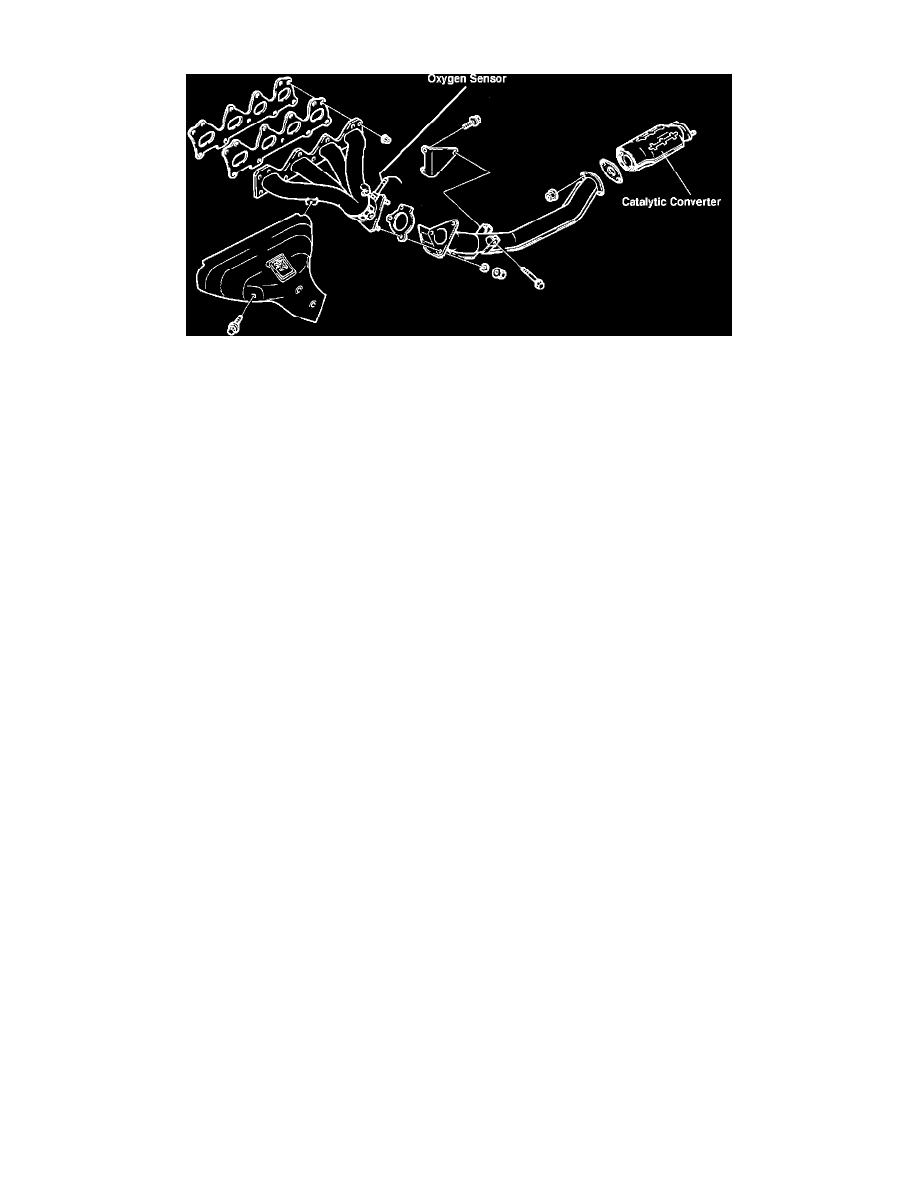MX-5 Miata L4-1597cc 1.6L DOHC (1992)

Three-Way Catalytic Converter: Description and Operation
Fig. 59 Catalytic Converter And Oxygen Sensor
PURPOSE
A three-way catalytic converter (TWC) is used downstream from the exhaust manifold to reduce oxides of nitrogen (NOx) and oxidize
hydrocarbons (HC) and carbon monoxide (CO). The converter contains the catalyst elements platinum, rhodium and palladium, which promote
oxidation and reduction reactions at high temperatures. Emissions are converted into carbon dioxide, water vapor and nitrogen.
OXIDATION REACTION
To change HC and CO into harmless materials, the catalytic elements (platinum and palladium) start an oxidation, or burning, reaction in the
converter. Oxidation is the addition of oxygen to an element or compound. During the oxidation process, Oxygen (O2) mixes with excess HC and
CO to form H2O and CO2. During the oxidation reaction process, considerable heat (900°F to 1,600°F) is generated.
REDUCTION REACTION
Reduction is the opposite of oxidation. This reaction changes NOx to nitrogen and free oxygen, which is then consumed in the oxidation reaction
with other pollutants. Catalytic elements required for the reduction process are platinum and rhodium.
The converter is designed to react with all three major exhaust pollutants, but works best to reduce NOx when exhaust CO level is between 0.8 and
1.5 percent. As CO level varies from that percentage, converter efficiency decreases. Exhaust gas first passes through the catalyst where oxides of
nitrogen are reduced, then through the catalyst where HC and CO are changed to H2O and CO2.
